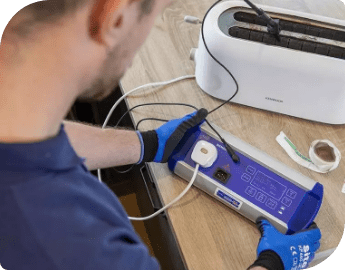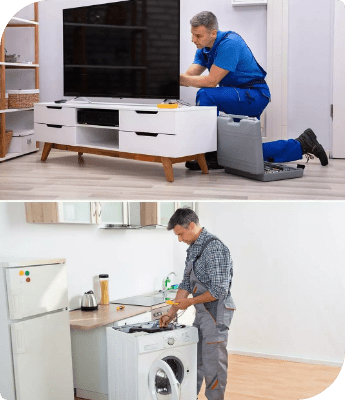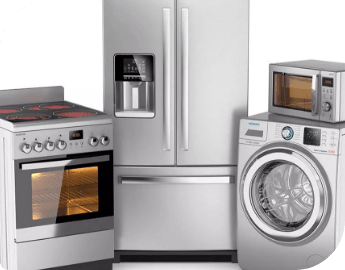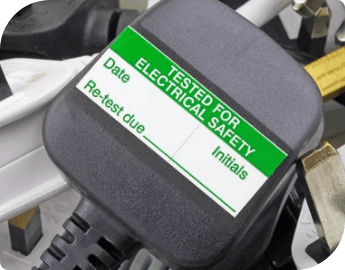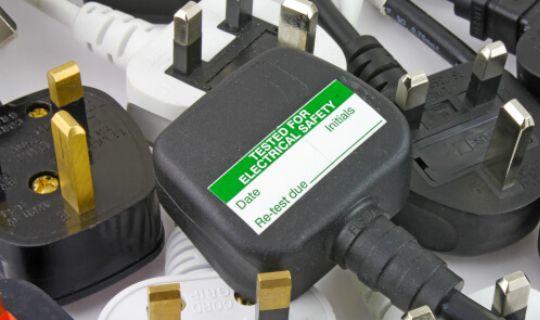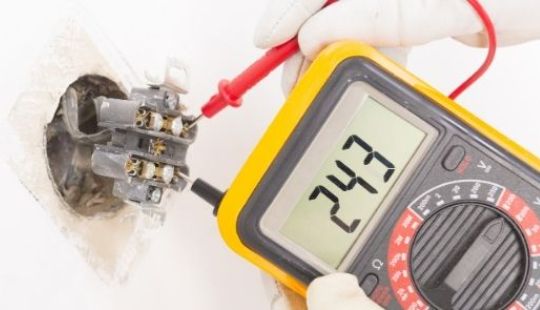Is PAT testing worth it?
Yes, PAT testing is highly worth it, especially for employers, business owners, and landlords. Although not a direct legal requirement, it is a standard practice to ensure electrical safety and comply with the legal obligation to provide a safe environment for employees, customers, or tenants. PAT testing identifies potential issues that can put people at risk, prevents fire hazards due to electrical faults, and ensures that electrical equipment is maintained in a safe condition, providing peace of mind and demonstrating commitment to safety.
Is PAT testing free?
No, PAT testing is a professional service performed by certified and experienced electricians using industry-grade electrical diagnostic equipment, and therefore, it is not free. The service involves a range of tests and visual inspections to ensure the electrical safety of appliances. Our service offers competitive and transparent pricing, which can be checked online.
Who pays for PAT testing?
The responsibility for paying for PAT testing typically falls on the "responsible person" for the electrical safety of the environment. This includes employers and business owners for their workplaces, and landlords for their rental properties, as they are legally required to provide a safe environment for employees, customers, or tenants. For private homeowners, there are no legal requirements to test appliances, so they would cover costs if they choose to have it done for peace of mind.
Do I need a PAT testing service for my electrical appliances at home?
There aren’t any legal requirements for private homeowners to test their appliances. However, you should always make sure that your home is electrically safe by getting faulty wiring, appliances and electrical fittings fixed by a qualified professional.
Is PAT testing a legal requirement for holiday lets?
While PAT testing is not a strict legal requirement for holiday lets in the same way it might be for commercial workplaces, landlords and holiday let owners are legally obliged to ensure that all electrical appliances provided are safe for use by tenants or guests. PAT testing is highly recommended as the most effective and widely recognized method to demonstrate compliance with these broader safety regulations. It helps prevent fire hazards and other risks, providing peace of mind for both the owner and the occupants.
What appliances and types of equipment should undergo PAT testing?
A wide range of electrical devices should undergo PAT testing, encompassing any appliance that is hardwired or can be connected to a plug socket, regardless of its size. These are categorized for PAT purposes into types such as Fixed appliances, Stationary appliances, IT appliances, Moveable appliances, Portable appliances, Cables and chargers, and Hand Held appliances. Examples include washing machines, fridges, desktop IT equipment, power tools, kettles, irons, and extension leads. Low voltage devices (under 50V) like laptops and phone chargers are generally exempt.
Are there different levels of PAT testing?
Yes, there are different classifications for electrical devices that determine the appropriate level or type of PAT testing. Appliances are generally categorized as Class 1, Class 2, and Class 3. Class 1 (earthed appliances) require a full PAT test. Class 2 (double insulated appliances) require a reduced PAT test, specifically an insulation test. Class 3 (low voltage devices) are generally considered exempt from PAT testing as they operate at very low voltages. The method of testing varies according to these classifications.
Do washing machines need PAT testing?
Yes, washing machines typically need PAT testing. They are categorized as Class 1, which are earthed appliances, and a full PAT test should be performed on them. This ensures their electrical safety and adherence to standards, which is particularly important in environments like rental properties or businesses where safety obligations apply.
Does a fridge freezer need PAT testing?
Yes, a fridge freezer typically needs PAT testing. As a Class 1 earthed appliance, it falls under the category of electrical devices that should undergo a full PAT test. This is essential to ensure its electrical safety, especially in environments where landlords, employers, or business owners have a legal obligation to provide safe premises for their tenants, employees, or customers.
Does a new electrical appliance need PAT testing?
Generally, new electrical appliances are supplied in a safe condition by manufacturers and do not immediately require a formal PAT test. However, it is always recommended to perform a simple visual check upon arrival to ensure the item is not damaged during transit. Subsequent formal PAT testing frequency for new appliances will then depend on the risk level of the environment where they are used and their frequency of use.
Can any electrician perform PAT testing, or does it require special certification?
While a qualified electrician generally possesses the foundational knowledge to perform PAT testing, the process often benefits from specific PAT testing training and certification. This specialized training ensures the individual is deemed "competent" by industry standards, possessing the technical knowledge to correctly classify appliances, use dedicated testing equipment, interpret results accurately, and maintain proper records. Our service uses certified and qualified electricians who are competent and experienced specifically in PAT testing.
Can you PAT test without unplugging?
For most comprehensive PAT tests, especially those involving electrical examinations of insulation resistance and earth continuity, the appliance generally needs to be unplugged to ensure safe and accurate testing. While a user check or a basic visual inspection might be performed without unplugging, detailed electrical tests require disconnecting the appliance from its power source. Hardwired electrical devices, by their nature, are visually inspected without being unplugged, as they are not fitted with a plug socket.
What will fail a PAT test?
An appliance will fail a PAT test if it presents any electrical safety defects that could pose a risk. Common reasons for failure include visual faults such as damaged flexes (cables), damaged plugs (e.g., cracks, bent pins, burn marks), incorrect wiring, or an incorrectly rated fuse. Electrical tests may also reveal failures due to issues like damaged insulation, faults with earth continuity in Class 1 appliances, or lead-polarity problems. If a device fails, it will be appropriately labeled and should be removed from service for repair or disposal.
Is portable appliance testing a legal requirement?
No. It is not, however, business owners, employers and landlords are legally required to ensure the electrical safety of their premises and appliances so that clients, employees and tenants are not put at risk. And regular PAT testing is the tool to achieve this.
Is PAT testing similar to an EICR?
Well, a PAT test is designed to check the safety of hardwired or plugged appliances, whereas the EICR’s purpose is to confirm that the electrical installation and fixed wiring in a commercial property or residential property for rent are safe. Landlords and employers are legally obliged to ensure that their property is electrically safe.
How long does it take to complete a PAT test?
This will depend on the number of appliances that need to be tested. On average, an experienced electrician can perform a PAT test in a rental property in about 1 hour. Large commercial spaces with many pieces of equipment to check will, of course, take longer.
How long does the PAT Certificate last?
The certificate only verifies that all appliances are safe for use at the time of testing. Re-testing of different electrical devices is recommended after different periods of time. This will depend on what category and class the equipment is, as well as on the risk level that a property or work environment is considered to be.
Can you issue a PAT test certificate?
Yes, we work with certified electricians, who can legally issue a PAT certificate, once the thorough check of your electrical appliances has been completed.
What is the difference between electrical safety testing and PAT testing?
Electrical safety testing is a broader term that encompasses various examinations of electrical installations and appliances to ensure overall safety. PAT testing (Portable Appliance Testing) is a specific part of electrical safety testing, focused on checking the safety of portable and movable electrical appliances that are hardwired or can be connected to a plug socket. Other forms of electrical safety testing, like an EICR (Electrical Installation Condition Report), assess the fixed wiring and electrical installation of a property, complementing PAT testing for comprehensive safety.


